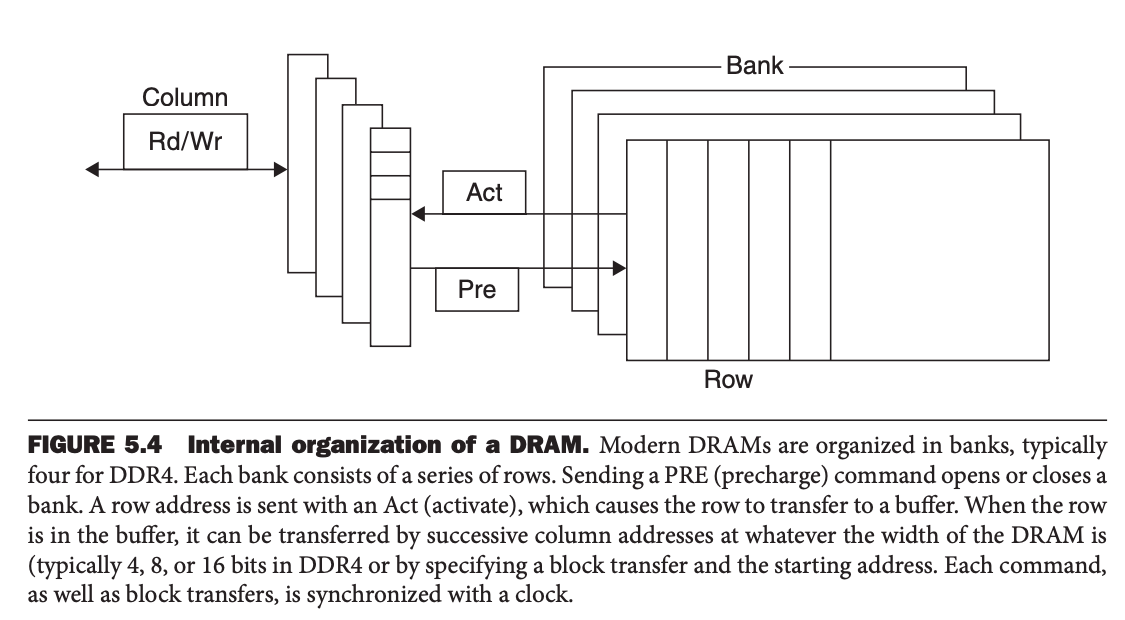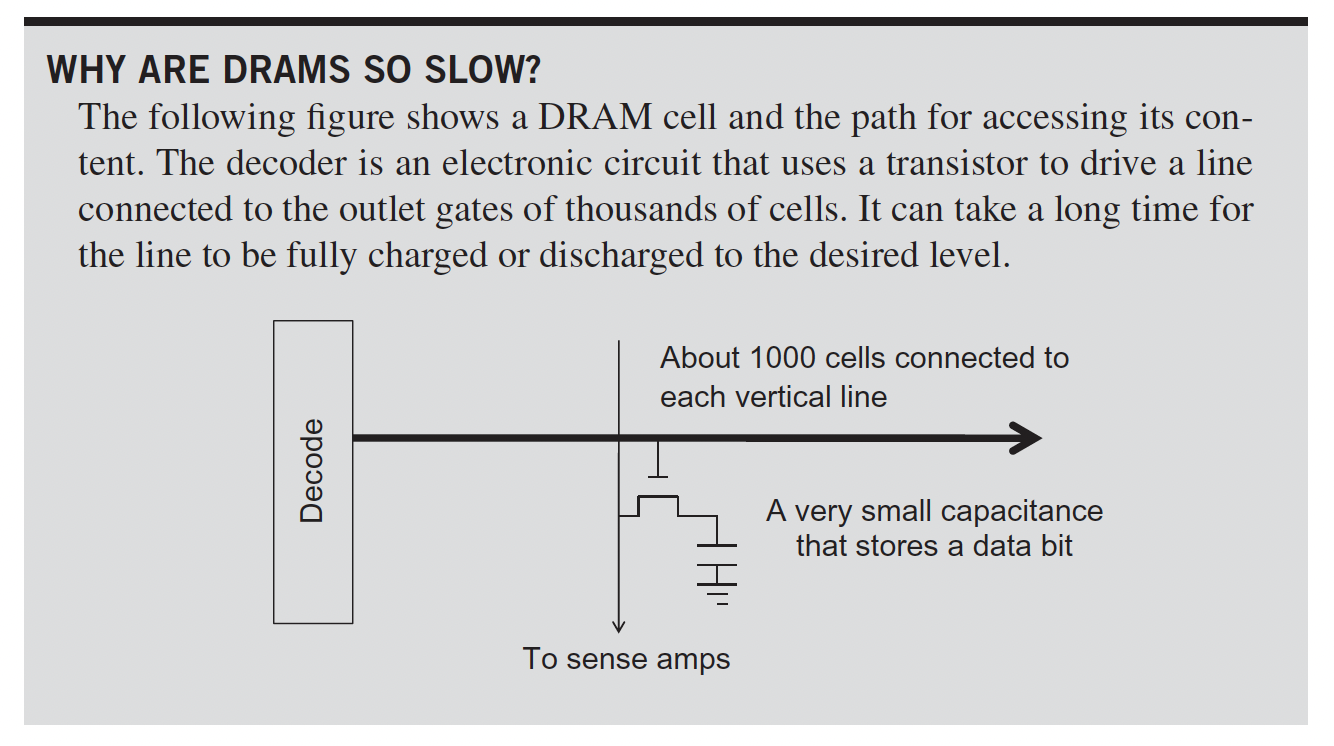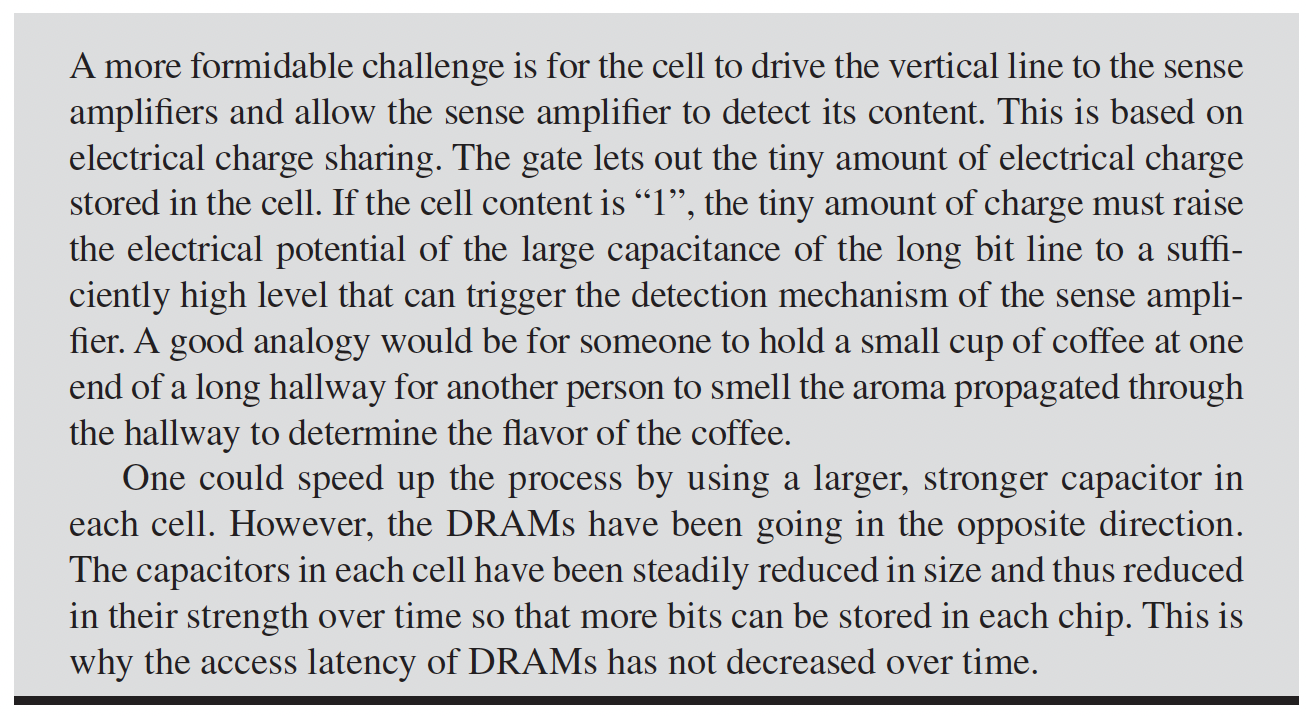Dynamic RAM (DRAM)
DRAM cells store data bits in small capacitors. DRAM is the RAM that you buy for your computer.
DRAM Components
There are 2 DRAM Components:
- 1 capacitor: Stores the data as an electrical charge.
- 1 transistor: Acts as a switch allowing access to read / change the capacitor state.
As DRAMs store the charge on a capacitor, it cannot be kept indefinitely and must periodically be refreshed.
- A single transistor is used to access a stored charge, so we have one transistor per bit of storage
- As opposed to SRAM where we use 6-8 transistors per bit
To refresh the cell, we merely read its contents and write it back. The charge can be kept for several milliseconds
- We use a two-level decoding structure to refresh entire row (which shares a word line) with a read cycle followed immediately by a write cycle

From PMPP: Reading data from a DRAM cell requires the small capacitor to use its tiny electrical charge to drive a highly capacitive line leading to a sensor and set off its detection mechanism that determines whether a sufficient amount of charge is present in the capacitor to qualify as a “1”.
How long does it take to read from DRAM?
Reading from DRAM takes 10s of nanoseconds in modern DRAM chips.
From PMPP book:


DRAM vs. SRAM difference?
In DRAM, the value kept in a cell is stored as a charge in a Capacitor. By contrast, in a SRAM, as long as power is applied, the value can be kept indefinitely.